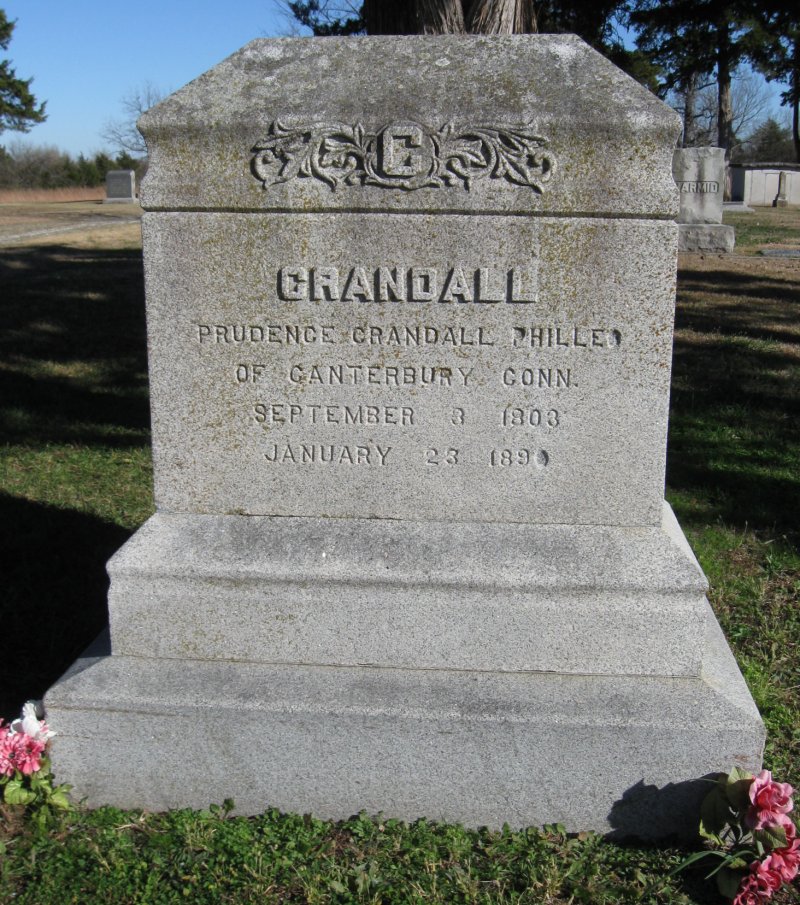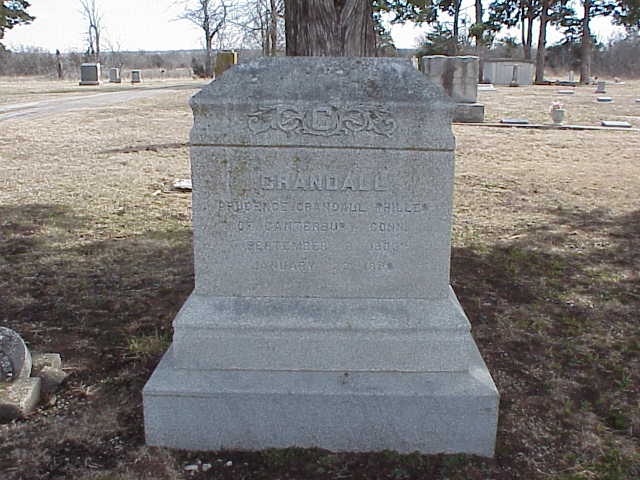Prudence Crandall (Prudence Crandall)

Prudence Crandall was born on September 3, 1803 to Pardon and Esther Carpenter Crandall, a Quaker couple in the Hope Valley area in the town of Hopkinton, Rhode Island. At the age of 17, her father decided to move the family to the small town of Canterbury, Connecticut. She attended the Friends’ Boarding School in Providence, Rhode Island and later taught in a school for girls in Canterbury. In 1831, she returned to run the newly established Canterbury Female Boarding School, which she purchased with her sister Almira.
In the fall of 1832, a young woman by the name of Sarah Harris, the daughter of a free African American farmer in the local community, asked to be accepted to the school to prepare for teaching other African Americans. Her father owned a small farm near Canterbury, and Harris even attended the same district school as the white girls who were attending Crandall’s school as teenagers. Although she was uncertain of the repercussions that this would cause, Crandall eventually allowed Harris to attend her school.[6] Many prominent townspeople objected and pressured to have Harris dismissed from the school, but Crandall refused. Families of the current students removed their daughters.
Consequently, Crandall ceased teaching white girls altogether and opened up her school strictly to African American girls. Crandall temporarily closed the school and began openly recruiting students on March 2, 1833, when William Lloyd Garrison, a supporter of the school, placed advertisements for new pupils in his newspaper The Liberator. Her advertisement announced that on the first Monday of April 1833 she would open a school “for the reception of young ladies and little misses of color, … Terms, $25 per quarter, one half paid in advance.” In the list of references were Arthur Tappan, Samuel J. May, William Lloyd Garrison, and Arnold Buffum.
As word of the school passed up and down the Atlantic seaboard, African American families began sending their daughters from out of state to the school. On April 1, 1833, twenty African-American girls from Boston, Providence, New York, Philadelphia, and surrounding areas in Connecticut arrived at Miss Crandall’s School for Young Ladies and Little Misses of Color.
Crandall taught a variety of subjects, including reading, writing, arithmetic, English grammar, geography, history, natural and moral philosophy, chemistry, astronomy, drawing and painting, music and the piano, and even the French language. The students were required to pay $25 per quarter, half in advance. This money covered tuition, board, and washing, while books and stationery were purchased and provided to the girls at a discounted price. Crandall’s excitement and sense of accomplishment at running a school to help young black women was short-lived because of the immediate ostracism and criticism she faced from her community and even the state.
Citizens of Canterbury at first protested the school and then held town meetings “to devise and adopt such measures as would effectually avert the nuisance, or speedily abate it…” Unable to shake Ms. Crandall’s spirit, the town response escalated into warnings, threats, and acts of violence against the school. Crandall was faced with great local opposition, and her detractors had no plans to back down. On May 24, 1833, the Connecticut legislature passed the “Black Law”, which prohibited a school with African American students from outside the state without the town’s permission. In July, Crandall was arrested and placed in the county jail for one night and then released under bond to await her trials.
Under the Black Law, the townspeople refused any amenities to the students or Crandall, closing their shops and meeting houses to them. Stage drivers also refused to provide them with transportation, and even the town doctors would not attend to their needs. To make matters worse, the townspeople also poisoned the school’s well—its only water source—with animal feces and then prevented Crandall from obtaining any water from other sources. It was difficult for Crandall to run her school, but she continued to teach the young women, angering the community even further.
Crandall’s students also suffered. One 17-year-old student, Anna Eliza Hammond, was even arrested; however, with the help of New York abolitionist Samuel J. May, she was able to post bail bond through collections and donations of $10,000. In response to May’s support of Crandall, Connecticut politician Andrew T. Judson stated, Mr. May, we are not merely opposed to the establishment of that school in Canterbury; we mean there shall not be such a school set up anywhere in our State. The colored people can never rise from their menial condition in our country; they ought not to be permitted to rise here. They are an inferior race of beings, and never call or ought to be recognized as the equals of the whites.
A prominent abolitionist, Arthur Tappan of New York, donated $10,000 to hire the ablest lawyers to defend Crandall throughout her trials, the first of which opened at the Windham County Court on August 23, 1833. The constitutionality of the Connecticut law regarding the education of African Americans was the driving issue of the cases. The defense argued that African Americans were citizens in other states, so therefore there was no reason why they should not be considered as such in Connecticut. Thus, they focused on the deprivation of their rights under the United States Constitution. In contrast, the prosecution denied the fact that freed African-Americans were citizens in any state, and the county court jury ultimately failed to reach a decision for the cases.
Although a second trial in Superior Court decided against the school, the case was taken to the Supreme Court of Errors on appeal in July 1834. At the conclusion of this appeal, the Supreme Court of Connecticut reversed the decision of the lower court, dismissing the case on July 22 on the grounds of a lack of evidence. The judicial process had not stopped the operation of the Canterbury school, but the townspeople’s violence against it increased. The windows were smashed with heavy iron bars as the vandalism continued. The public was so angry at the dismissal of the case that on September 9, the school was set on fire. For the safety of her students, her family and herself, Prudence Crandall decided to close her school on September 10, 1834.
In August of the same year the school closed, Prudence Crandall married the Rev. Calvin Phileo.[3] Mr. and Mrs. Philleo moved to Massachusetts, then lived in New York, Rhode Island, and Illinois, where Calvin Phileo died. The widowed Prudence Crandall relocated to Elk Falls, Kansas, where a state historical marker commemorates her contributions. Connecticut repealed the Black Law in 1838, and later recognized Prudence Crandall with an act of the state legislature, prominently supported by Mark Twain, providing her with a $400 yearly pension in 1886 (equivalent to $10,500 in 2014).
Born
- September, 03, 1803
- USA
- Hope Valley, Hopkinton, Rhode Island
Died
- January, 28, 1890
- USA
- Elk Falls, Kansas
Cemetery
- Elk Falls Cemetery
- Elk Falls, Kansas
- USA



